May 21, 2025 | 03:26 GMT +7
May 21, 2025 | 03:26 GMT +7
Hotline: 0913.378.918
May 21, 2025 | 03:26 GMT +7
Hotline: 0913.378.918
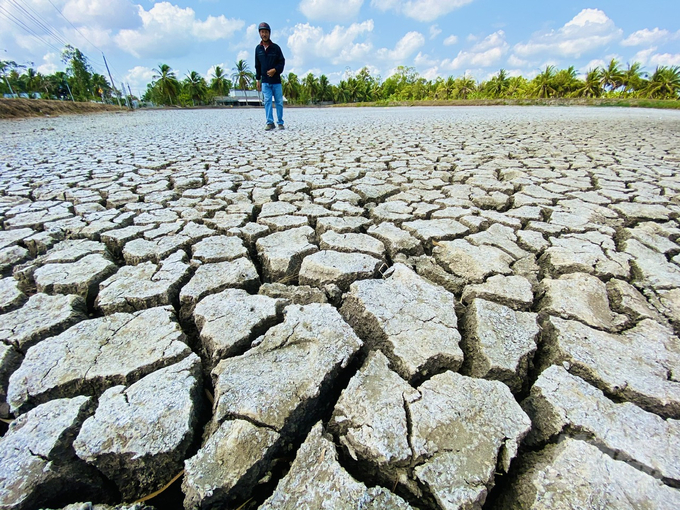
It is forecast that saltwater intrusion in the dry season of 2023-2024 will appear earlier and deeper, sometimes equivalent to 2015-2016 and 2019-2020. Photo: Le Hoang Vu.
According to the National Center for Hydro-Meteorological Forecasting, saltwater intrusion in the dry season of 2023-2024 may appear early and deeply in the Mekong Delta, sometimes equivalent to 2015-2016 and 2019-2020.
MSc. Nguyen Huu Thien, an independent expert on Mekong Delta ecology, said that when talking about salinity drought risks in the Mekong Delta, it is necessary to consider two separate regions: the Mekong River estuary and the Ca Mau peninsula because these two regions are very different. Due to its location at the end of the Mekong basin, the Mekong estuary is affected by water volume fluctuations upstream (including upstream climate change and the operation of hydroelectric reservoirs).
In the year when El Nino has little rain, the Mekong River's flood season is low and the flow is weak in the dry season. When the water level of the Mekong River is low, the hydroelectric dams are not deep enough to run turbines to generate electricity, so they must be closed to store water to a sufficient depth. If the upper dam closes, the lower dam and the next dam must wait. Water passing through a series of dams will take a long time, and the saline drought situation in the Mekong Delta will be very severe. During extreme El Nino years, coastal salinization prevention works are only effective at the beginning of the dry season. In the middle of the dry season, even if you prevent saltwater from coming in from the sea, there is still no water inside.
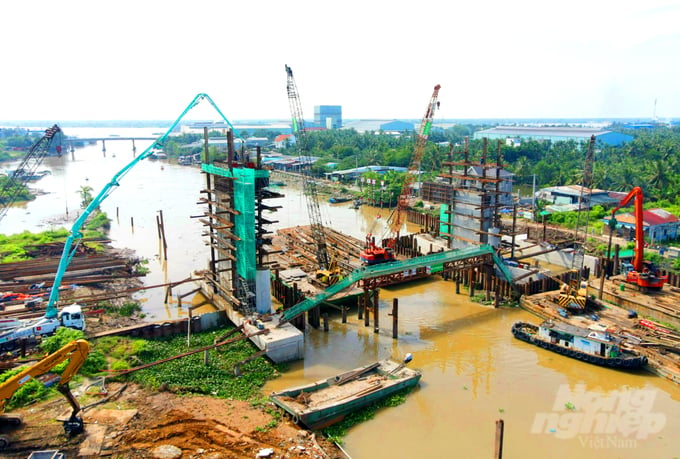
Irrigation Investment and Construction Management Board 10 is accelerating the construction progress of the saltwater prevention culvert and regulating Nguyen Tan Thanh's water source. Photo: Le Hoang Vu.
As a locality often affected by early drought and saltwater intrusion, causing tens of thousands of hectares of rice and fruit trees to be affected, this year Tien Giang province has proactively taken many appropriate adaptation solutions. Accordingly, 44,760 hectares of winter-spring rice will be sown simultaneously from early November to the end of December. The province recommends that farmers promote high-quality, fragrant and rice varieties resistant to drought and salinity.
In addition, nearly 830 hectares of rice in areas lacking irrigation water will be converted to other, more suitable crops. The agricultural sector will also train people on measures to care for plants in drought and salty seasons. It is recommended to increase the use of organic fertilizers and micronutrients to increase the resistance of plants and apply economical watering measures in the dry season.
Mr. Nguyen Van Man, Director of Tien Giang Department of Agriculture and Rural Development, said that from October to April 2024, the agricultural sector will inspect salinity prevention works, strengthen the dike system, and embankment. Adding dams to prevent salinity and store fresh water in the dry season not only protects agricultural production for farmers but also proactively prevents and combats possible saltwater intrusion.
At the same time, the province also coordinated with Long An to operate a thorough salinity control project from the direction of Vam Co Tay River. In addition, many engineers and workers of Irrigation Investment and Construction Management Board 10 are speeding up the construction progress of the Nguyen Tan Thanh culvert - a critical project to prevent salinity and regulate water resources, with investment funds of about VND 500 billion. This is a fundamental, long-term project. This culvert is expected to have a temporary operating gate installed in February next year.
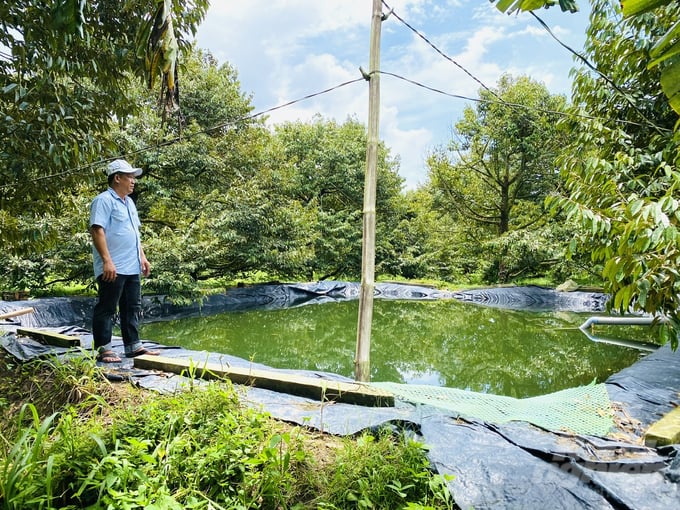
People in the Mekong Delta store fresh water in orchards to ensure irrigation during the dry season. Photo: Le Hoang Vu.
Kien Giang Department of Agriculture and Rural Development has directed the Provincial Irrigation Department to operate 55 sluices along the coast of Rach Gia proactively—Kien Luong and along the Cai Be river—along with 35 sluices from the O Mon-Xa No irrigation project and 17 sluices in the U Minh Thuong region. At the same time, proactively build 37 earthen dams in areas where salinity prevention sluices have not been completed in An Bien, An Minh and Giang Thanh districts to better control water sources, serving agricultural production, aquaculture and domestic water for the citizens.
The results of Cai Lon-Cai Be sluice operation have helped previous production models remain stable and effective compared to monoculture production. Some typical models have brought higher economic efficiency from VND 6.8 million to VND 71 million/ha compared to conventional production.
During the dry season of 2015 - 2016, 10 provinces and cities in the Mekong Delta region had to declare natural disasters caused by drought and saltwater intrusion, with a total loss of up to VND 7,900 billion. Although drought and salinity are considered complicated in the dry season of 2019 - 2020, thanks to early forecasting, localities have implemented many proactive construction solutions to prevent natural disasters. Therefore, only 58,400 hectares of rice were damaged, equal to 14% compared to 2015 - 2016, while the area of fruit trees damaged and the number of households lacking domestic water also decreased significantly compared to 2015 - 2016.
Translated by Tuan Huy

(VAN) In 2024, over 295 million people across 53 countries and territories faced acute hunger—an increase of almost 14 million people compared to 2023, while the number of people facing catastrophic levels of hunger reached a record high.

(VAN) World Environment Day 2025 (June 5) carries the theme 'Beat Plastic Pollution' continuing to emphasize the global urgency of addressing the plastic waste crisis.

(VAN) This was the assessment shared by experts at the workshop titled 'Assessing the Role and Potential of Low-Emission Rice Production Systems in Vietnam,' held on the morning of May 19.

(VAN) Cai Rong Port is the fisheries control center of Quang Ninh, helping to monitor fishing vessels, combat IUU fishing, and remove the EC's 'yellow card'.
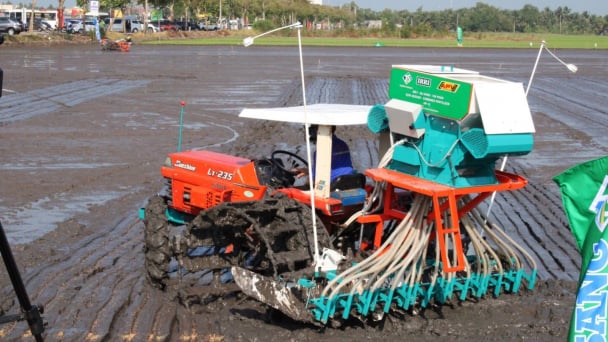
(VAN) The German Agricultural Society (DLG) explores the possibility of establishing a mechanization service center in Vietnam’s Mekong Delta to support farmers in accessing and utilizing advanced machinery.
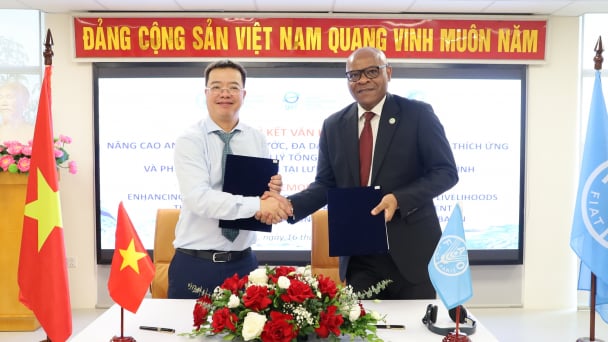
(VAN) On May 16, the Department of Water Resources Management, in collaboration with the Food and Agriculture Organization of the United Nations (FAO), held a signing ceremony for the GEF-8 project document.
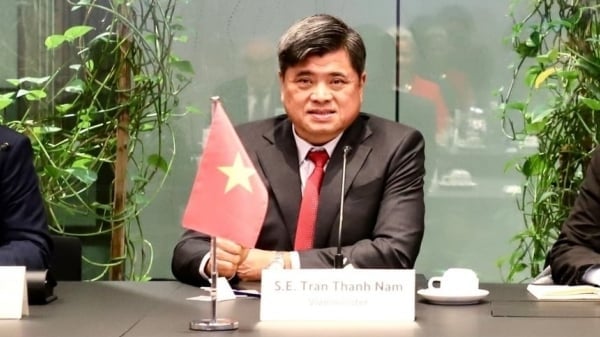
(VAN) Food safety, mechanization, vocational training, and market opening are key areas of cooperation expected between the Vietnamese Government and the Federal Republic of Germany.